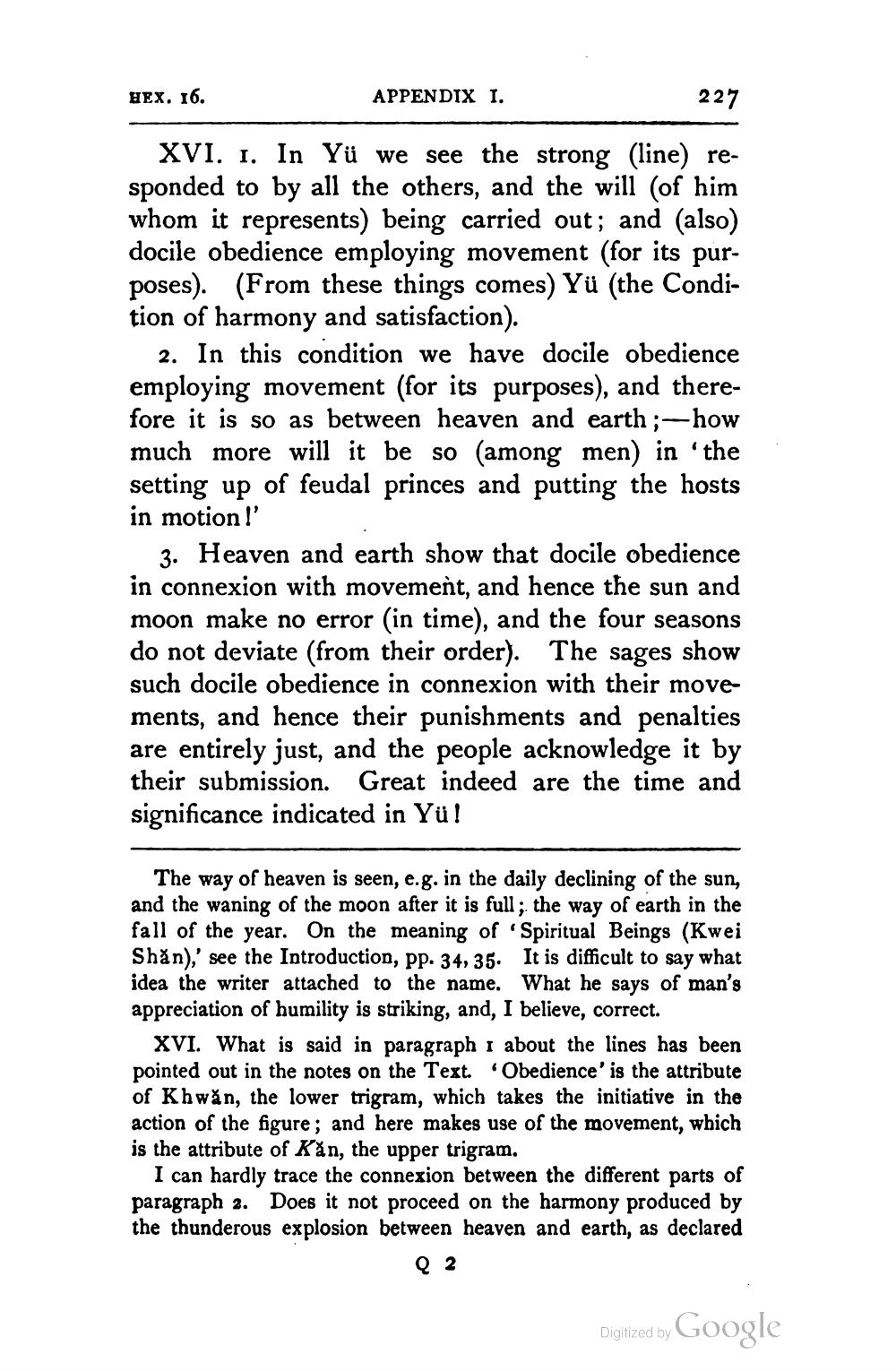________________
HEX. 16.
APPENDIX I.
227
XVI. 1. In Yü we see the strong (line) responded to by all the others, and the will (of him whom it represents) being carried out; and (also) docile obedience employing movement (for its purposes). (From these things comes) Yü (the Condition of harmony and satisfaction).
2. In this condition we have docile obedience employing movement (for its purposes), and therefore it is so as between heaven and earth ;-how much more will it be so (among men) in 'the setting up of feudal princes and putting the hosts in motion!'
3. Heaven and earth show that docile obedience in connexion with movement, and hence the sun and moon make no error (in time), and the four seasons do not deviate (from their order). The sages show such docile obedience in connexion with their movements, and hence their punishments and penalties are entirely just, and the people acknowledge it by their submission. Great indeed are the time and significance indicated in Yü!
The way of heaven is seen, e.g. in the daily declining of the sun, and the waning of the moon after it is full; the way of earth in the fall of the year. On the meaning of Spiritual Beings (Kwei Shăn),' see the Introduction, pp. 34, 35. It is difficult to say what idea the writer attached to the name. What he says of man's appreciation of humility is striking, and, I believe, correct.
XVI. What is said in paragraph I about the lines has been pointed out in the notes on the Text. Obedience' is the attribute of Khwăn, the lower trigram, which takes the initiative in the action of the figure; and here makes use of the movement, which is the attribute of Kån, the upper trigram.
I can hardly trace the connexion between the different parts of paragraph 2. Does it not proceed on the harmony produced by the thunderous explosion between heaven and earth, as declared
Q2
Digitized by Google




